- Flexible Learning Options and Fast-track Batches Available to Suit Your Schedule.
- Full Stack Training Covers HTML, CSS, JavaScript, React, Node.js, Express, MongoDB.
- Expert Guidance on Resume Building, Interview Preparation, and Long-term Success.
- Gain Practical Experience by Building Real-world Projects Through Interactive Coding Sessions.
- Get Certified With Our Full Stack Developer Course in Siruseri, Featuring Placement Assistance.
- Join the top Full Stack Developer Training Institute in Siruseri to Master Both Front-end and Back-end Skills.
Join Our 100% Job Guaranteed
Full Stack Developer Course in Siruseri
WANT IT JOB
Become a Full Stack Developer in 3 Months
Freshers Salary
3 LPA
To8 LPA
Quality Training With Affordable Fees in Siruseri!
11459+
(Placed)5345+
(Placed)8975+
(Placed)3599+
(Placed)Our Hiring Partners




Overview of Full Stack Course in Siruseri
You will learn full stack development from the bottom up with our Full Stack Developer Course in Siruseri. Working on real-world projects will give you practical, hands-on experience with front-end and back-end technologies, such as HTML, CSS, JavaScript, React, Node.js, Express, and MongoDB. With topics ranging from database administration to user interface design, this course gives you the tools you need to create dynamic web applications. After finishing successfully, you'll get a certification that improves your job readiness and gets you ready for a career in full stack development.
What You'll Learn From Full Stack Training
The Offline Full Stack Developer Training is perfect for both beginners and experienced professionals who want to build end-to-end web development skills from the ground up.
You'll master essential technologies such as HTML, CSS, JavaScript, React, Node.js, Express, and MongoDB to create both front-end and back-end applications.
Our program emphasizes real-world projects and practical business scenarios, enabling you to build responsive websites and dynamic web applications.
With expert-led, classroom-based training, you’ll gain hands-on experience and the confidence to handle real-time development tasks.
By the end of the course, you’ll understand full stack development best practices and earn a recognized certification.
This offline training prepares you for in-demand roles in software development, web engineering, and fast-paced tech environments.
Additional Info
Course Highlights
- Choose Your Specialization: Java Full Stack, Python Full Stack, MEAN Stack, or MERN Stack.
- Unlock exciting job opportunities with leading MNCs through our robust placement support.
- Join a community of over 11,462 trained professionals and connect with 350+ hiring partners.
- Get expert-led Full Stack Developer training designed to help you land your dream job.
- Benefit from an industry-relevant curriculum, hands-on learning, and 100% job assistance – all at an affordable cost.
- Accelerate your career with interactive, practical training delivered by seasoned professionals with over a decade of real-world experience.
Exploring the Benefits of Full Stack Course
- Comprehensive Skill Set for Web Development: You can become proficient in both frontend and backend technologies by enrolling in a full stack development course. With this information, you may make well-informed architectural choices and design and develop end-to-end online apps. You learn how to create solutions that are effective, scalable, and user-friendly by getting hands-on experience with real-world projects. This reduces guesswork and speeds up the development process.
- Strong Career Prospects and Industry Demand: Full stack development skills are in high demand across diverse sectors such as fintech, education technology, and online retail. This course prepares you for roles including Frontend Developer, Backend Developer, Software Engineer, Web Developer, and Full Stack Developer. These positions typically offer competitive salaries, job security, and promising career growth in today’s technology-driven job market.
- Increased Team Contribution and Project Efficiency: Gaining expertise in both client-side and server-side technologies makes you a versatile team member. You can actively participate in various phases of a project from designing interfaces to managing databases leading to better communication and smoother workflows. This versatility helps speed up project completion and enhances the overall user experience.
- Strengthened Analytical Thinking and Coding Proficiency: The course hones your logical reasoning, coding skills, and problem-solving abilities. You gain the ability to break down difficult technical issues and create original, workable solutions. These skills not only increase your coding productivity but also your self-assurance and adaptability in dynamic work settings.
Essential Tools for Full Stack Training in Siruseri
- HTML, CSS & JavaScript for Frontend Development: Frontend development relies on the foundational trio of HTML, CSS, and JavaScript. HTML structures the content of a webpage, CSS styles and enhances its visual appeal, and JavaScript introduces interactivity and dynamic behavior. Combined, these technologies empower developers to create responsive, user-friendly interfaces essential for modern web applications.
- React for Dynamic User Interfaces: React is a powerful JavaScript library used for building fast, scalable, and interactive user interfaces. It enables developers to create reusable UI components and efficiently manage application state and data flow. As a staple in contemporary frontend development, mastering React is a critical step toward building sophisticated, dynamic web applications.
- Node.js & Express for Backend Development: Express is a lightweight, adaptable framework that makes it easier to manage server-side logic and create APIs, whereas Node.js enables developers to use JavaScript for server-side development. They constitute the foundation of many contemporary online projects by supporting essential backend functions including managing application workflows, connecting to databases, and processing HTTP requests.
- MongoDB for Database Management: MongoDB is a high-performance NoSQL database that stores data in a flexible, JSON-like format. It is well-suited for modern applications that require quick access to dynamic and unstructured data. Learning MongoDB equips developers with the skills to efficiently store, retrieve, and manage data in full stack development environments.
Top Frameworks Every Full Stack Developer Should Know
- PostgreSQL: Strong, scalable, and compliant with standards, PostgreSQL is an open-source relational database system. Complex queries, transactions, and extensibility via unique functions and data types are all supported. PostgreSQL is the best choice for full stack developers when creating applications that need relational integrity and structured data.
- Tailwind CSS: Tailwind CSS is a utility-first CSS framework that allows developers to design custom user interfaces directly within their markup. It promotes consistency and rapid development by providing a wide range of predefined utility classes. Using Tailwind can speed up styling and make frontend development more maintainable and scalable.
- Vue.js: Vue.js is a progressive JavaScript framework for building user interfaces and single-page applications. It is known for its simplicity, flexibility, and ease of integration into projects. Vue uses a component-based architecture similar to React, and mastering it allows developers to create dynamic, reactive, and efficient web applications.
- Git & GitHub: Git is a distributed version control system that enables developers to track changes in code and collaborate seamlessly across teams. GitHub is a cloud-based platform that hosts Git repositories, offering features like pull requests, issue tracking, and project management. Together, they are essential tools for source control, team collaboration, and contributing to open-source projects.
Must-Have Skills You'll Gain in a Full Stack Developer Course in Siruseri
- Frontend & Backend Development: You will learn to develop complete web applications using both client-side and server-side technologies. From creating responsive layouts with HTML, Tailwind CSS, and Vue.js to building secure and scalable backends with Python and Django, you will gain the skills to work across the entire development stack. This versatility is highly valued by employers across industries.
- Hands-on Programming with Python, Vue.js, and Django: You will gain practical experience with key modern technologies. Python will be used for backend logic, Django for creating RESTful APIs and managing server-side operations, and Vue.js for building interactive user interfaces. You'll also use GitLab for version control and collaboration, improving project organization and team coordination.
- Database Management with PostgreSQL and Firebase: You will learn to work with both relational and cloud-hosted databases. PostgreSQL is ideal for managing structured data and complex queries, while Firebase offers real-time NoSQL database services suited for responsive web apps. These tools will equip you to store, retrieve, and manage data efficiently in various development scenarios.
- Live Projects and Real-World Problem Solving: Our Full Stack Developer Training in Siruseri includes practical projects that simulate actual development challenges. You will apply your skills to build dynamic websites, secure APIs, and fully functional web applications. These hands-on experiences will prepare you for real job roles and help you build a strong professional portfolio.
Roles and Responsibilities You'll Prepare For in Full Stack Training
- Web Development Mentor: Mentors guide students through the process of building real-world web applications by offering support, feedback, and industry insights. They help learners understand best practices in coding, project structure, and performance optimization. The goal is to ensure learners grow confidently into capable and job-ready developers.
- Full Stack Engineer: Full stack engineers handle both frontend and backend development. They design database schemas, develop RESTful APIs, and build interactive user interfaces using modern frameworks. Their role bridges the gap between client and server, ensuring cohesive and efficient application performance.
- UI/UX Designer: UI/UX designers focus on crafting intuitive and visually appealing user experiences. They conduct user research, build wireframes and prototypes, and collaborate closely with developers to implement design solutions. Their objective is to make digital products both functional and user-friendly.
- Cloud Engineer with Internship Opportunities: Internship programs offered by tech institutes in Siruseri provide hands-on experience in cloud platforms like AWS or Azure. Participants learn about cloud architecture, virtual environments, and automated deployment. These skills are crucial for managing scalable and resilient cloud-based systems.
Why Full Stack Training is a Great Career Choice for Freshers
- Wide Range of Career Paths: A background in full stack development can lead to careers in web development, software engineering, technical consulting, or product management. These roles are available across sectors including education, logistics, entertainment, and enterprise software, offering flexibility in job selection.
- Smooth Transition for Career Changers: The course is ideal for professionals from non-technical backgrounds who want to shift into tech. With structured learning, real-world projects, and mentorship, learners can successfully transition into tech careers regardless of their previous experience.
- Affordable Full Stack Training in Siruseri: Our program offers cost-effective training with high instructional value. With EMI plans, weekend batches, and access to recorded sessions, it's accessible for college students, working professionals, and career switchers.
- Pathway to Freelancing and Entrepreneurship: Full stack development skills empower individuals to launch their own startups, freelance for global clients, or build personal projects. These opportunities encourage independence, creativity, and financial growth beyond traditional job roles.
How Full Stack Skills Help You Secure Remote Jobs
- Work Autonomously and Collaborate Remotely: Full stack development training equips you to work independently while contributing effectively to distributed teams. These skills are essential for remote software roles where collaboration happens virtually.
- Adaptable Work Schedules: Many development tasks offer schedule flexibility, allowing you to manage your time efficiently and maintain a healthier work-life balance, especially in remote or freelance environments.
- Prepared for the Global Job Market: With strong full stack capabilities, your profile becomes appealing to employers across the globe. This opens up opportunities to work with international tech companies and diverse teams.
- Freelance and Contract Opportunities: In addition to full-time jobs, full stack skills enable you to take on freelance projects or contract-based roles. This flexibility allows you to earn from multiple sources and build a varied professional portfolio.
What to Expect in Your First Full Stack Developer Job
- Working with Real-World Codebases: In this role, you will handle complex projects that involve collaboration among multiple team members and stakeholders. Adhering to strong coding standards and having effective debugging skills are essential to maintain high code quality. Using version control systems like Git ensures smooth teamwork and efficient tracking of project changes.
- Proficiency with Development Tools: You will frequently use integrated development environments (IDEs) to write and test your code effectively. Debugging tools help quickly identify and fix issues, while familiarity with deployment platforms enables you to launch applications confidently, boosting your overall productivity.
- Grasping Client and Business Requirements: As a full stack developer, you serve as a link between technical implementation and business objectives. You will gather, analyze, and interpret client needs to develop software solutions that satisfy user expectations. Translating business goals into functional features is critical for delivering meaningful applications.
- Effective Presentation and Documentation: Clear communication of your progress and outcomes is crucial. Maintaining thorough documentation allows team members and stakeholders to understand and manage the codebase efficiently. Regularly sharing updates and reports promotes collaboration and helps ensure project success.
Top Companies Hiring Full Stack Developers
- Tata Consultancy Services (TCS): TCS is a leading IT services company that hires full stack developers to work on large-scale enterprise solutions. The company emphasizes innovation and offers opportunities to collaborate with global clients across various industries. Employees benefit from extensive training programs and career development initiatives.
- Wipro: Wipro recruits skilled full stack developers to support its diverse technology services and consulting projects. The company encourages continuous learning and provides a dynamic work environment with exposure to cutting-edge tools. Developers work on impactful projects across sectors like healthcare, banking, and retail.
- Cognizant: Cognizant engages full stack developers in delivering digital transformation solutions for clients worldwide. The company fosters a culture of innovation and invests in employee growth through upskilling and certification programs. Developers gain experience in cloud computing, AI, and IoT-driven projects.
- HCL Technologies: HCL Technologies hires full stack developers to build scalable applications and enterprise software solutions. The company offers opportunities to work on emerging technologies and participate in global delivery models. Employees benefit from flexible work arrangements and continuous professional development.
Upcoming Batches For Classroom and Online
Who Should Take a Full Stack Training
IT Professionals
Non-IT Career Switchers
Fresh Graduates
Working Professionals
Diploma Holders
Professionals from Other Fields
Salary Hike
Graduates with Less Than 60%
Job Roles For Full Stack Developer Course
Full Stack Developer
Back-End Developer
Web Developer
Software Engineer
Front-End Developer
Application Developer
JavaScript Developer
Python Developer
Tools Covered For Full Stack Training
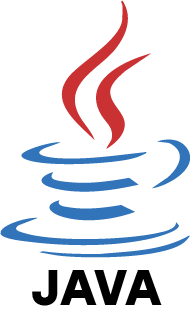
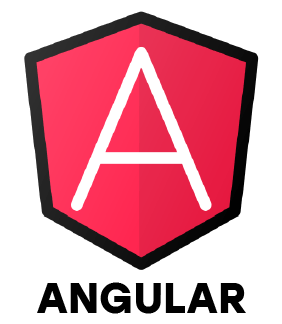

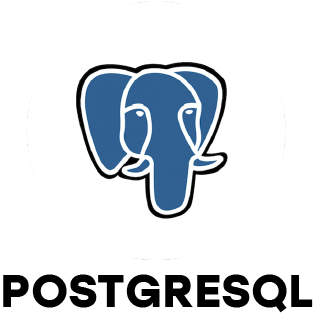

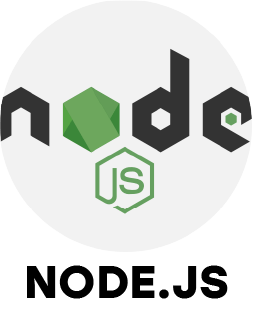
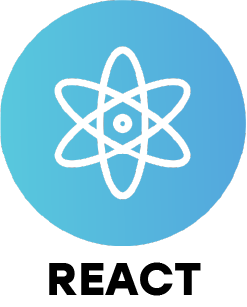
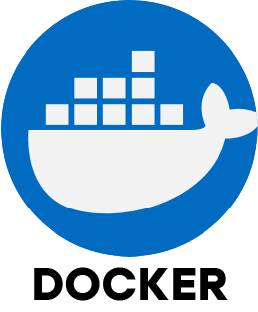
What’s included ?

📊 Free Aptitude and Technical Skills Training
- Learn basic maths and logical thinking to solve problems easily.
- Understand simple coding and technical concepts step by step.
- Get ready for exams and interviews with regular practice.

🛠️ Hands-On Projects
- Work on real-time projects to apply what you learn.
- Build mini apps and tools daily to enhance your coding skills.
- Gain practical experience just like in real jobs.

🧠 AI Powered Self Interview Practice Portal
- Practice interview questions with instant AI feedback.
- Improve your answers by speaking and reviewing them.
- Build confidence with real-time mock interview sessions.

🎯 Interview Preparation For Freshers
- Practice company-based interview questions.
- Take online assessment tests to crack interviews
- Practice confidently with real-world interview and project-based questions.

🧪 LMS Online Learning Platform
- Explore expert trainer videos and documents to boost your learning.
- Study anytime with on-demand videos and detailed documents.
- Quickly find topics with organized learning materials.
Full Stack Developer Course Syllabus in Siruseri
- 🏫 Classroom Training
- 💻 Online Training
- 🚫 No Pre Request (Any Vertical)
- 🏭 Industrial Expert
By choosing specific courses that fit their interests and professional objectives, students enrolled in Siruseri's Full Stack Developer Course can improve their chances of landing a position at a leading software company. With this adaptable curriculum, students can concentrate on important topics like cloud integration, backend programming, or frontend development while gaining a solid foundation in full stack technologies.
- Java Full Stack – Covers Java, Spring Boot, and Angular or React for robust enterprise-level applications.
- Python Full Stack – Includes Python with Django or Flask, plus essential front-end technologies.
- MEAN Stack – Focuses on MongoDB, Express.js, Angular, and Node.js for modern JavaScript-based development.
- MERN Stack – Offers training in MongoDB, Express.js, React, and Node.js for building dynamic single-page applications.
These are used to build the user interface:
- HTML5 – Structure of web pages
- CSS3 – Styling web pages
- JavaScript – Client-side scripting
- Bootstrap / Tailwind CSS – Responsive design frameworks
- React.js / Angular / Vue.js – JavaScript frameworks/libraries for building dynamic UIs
These handle business logic, data processing, and server communication:
- Node.js (with Express.js) – Popular for JavaScript-based backend
- Java (Spring Boot) – Enterprise-level applications
- Python (Django / Flask) – Simpler, powerful backends
- PHP (Laravel / Core PHP) – Common for small-to-mid web apps
- Ruby on Rails – Elegant and fast development
- .NET (C#) – Microsoft’s enterprise web stack
Used for storing and managing data:
- MongoDB Basics – Work with documents, collections and CRUD operations.
- Mongoose – Connect MongoDB with Node.js using schema-based models.
- Data Relationships – Create links between different types of data.
- Validation – Ensure only correct data is stored in the database.
- Database Indexing – Improve data search speed.
Used for code management and collaboration:
- Git – Version control
- GitHub / GitLab / Bitbucket – Code repositories
- Pull Requests– Collaborate on code with others and review changes
- Branch Management– Work on different parts of code without conflicts
- Basic CLI Commands– Use the terminal to manage repositories
For deploying and managing web applications:
- Docker – Containerization
- CI/CD Tools – Jenkins, GitHub Actions
- Web Servers – Apache, Nginx
- Cloud Platforms – AWS, Azure, Google Cloud
- Deployment – Heroku, Netlify, Vercel
Additional Tools
- RESTful APIs, GraphQL, JSON, AJAX
- Package managers like npm
- Build tools such as Webpack and Babel
- Testing frameworks like Jest
- Development environments like Visual Studio Code
Solve issues that happen during deployment.
- Introduction to Deployment: Understand the concept of hosting web apps.
- Netlify & Vercel: Host front-end apps with CI/CD support.
- Render & Railway: Deploy Node.js back-end apps easily.
- Environment Configuration: Set up ports, secrets and variables in hosting platforms.
- Domain Setup: Link your application to a custom domain.
🎁 Free Addon Programs
Aptitude, Spoken English
🎯 Our Placement Activities
Daily Task, Soft Skills, Projects, Group Discussions, Resume Preparation, Mock Interview
Build Real-Time Skills Through Full Stack Project Involvement
Project 1
E-commerce Platform Development
Build an online store with product listings, shopping cart, user authentication, and payment integration. Include personalized recommendations based on user behavior for better engagement.
Project 2
Healthcare Appointment System
Make a web application that allows users to manage and schedule appointments with doctors based on patient profiles and availability. Provide users with appointment reminders.
Project 3
Social Media Analytics Tool
Create a tool that gathers likes, shares, and comments from various social platforms, analyzes engagement trends, and integrates sentiment analysis to interpret user feedback and overall audience sentiment.
Project 4
IoT Device Monitoring Dashboard
Develop a real-time dashboard for monitoring IoT device data with alerts for anomalies, historical data visualizations, and user controls to manage smart appliances and sensors efficiently across connected systems.
Project 5
Online Learning Management System
Create an LMS with course creation, video lectures, quizzes, and progress tracking. Include role-based access for students, instructors, and admins, interactive forums, and auto-generated certificates upon course completion.
Placement Support Overview
Today's Top Job Openings for Full Stack Developers
Junior Java Developer
Company Code : AIS346
Chennai, Tamilnadu
₹20,000 - ₹50,000 a month
Any Degree
Exp 0-2 yrs
Angular Developer
Company Code : LIW249
Chennai, Tamilnadu
₹25,000 - ₹40,000 a month
Any Degree
Exp 0-1yr
Software Developer
Company Code : ATH405
Chennai, Tamilnadu
₹15,000 - ₹25,000 a month
Bsc
Exp 0-2 yrs
Python/Django Developer
Company Code : CTK614
Chennai, Tamilnadu
Up to ₹25,000 a month
Any Degree
Exp 0-3 yrs
MERN Stack Developer
Company Code : DMS310
Chennai, Tamilnadu
₹30,000 - ₹50,000 a month
Bachelor's degree
Exp 0-2 yrs
Full Stack Developer
Company Code : REB146
Chennai, Tamilnadu
₹25,000 - ₹40,000 a month
Any Degree
Exp 0-1 yr
Back - End Developer
Company Code : DIG116
Chennai, Tamilnadu
₹15,000 - ₹25,000 a month
Any Degree
Exp 0-3 yrs
React Js Developer Fresher
Company Code : RGS143
Chennai, Tamilnadu
₹20,000 - ₹30,000 a month
Any Degree
Exp 0-1 yr
Internship Highlights for Full Stack Developer
Real-Time Projects
- 1. Gain hands-on experience by working on live industry-based applications.
- 2. Understand real-world problem-solving through full stack development scenarios.
Skill Development Workshops
- 1. Participate in focused sessions on trending technologies and tools.
- 2. Learn directly from industry experts through guided practical exercises.
Employee Welfare
- 1. Enjoy benefits like health coverage, flexible hours, and wellness programs.
- 2. Companies prioritize mental well-being and work-life balance for all employees.
Mentorship & Peer Learning
- 1. Learn under experienced mentor guide your technical and career growth.
- 2. Collaborate with peers to enhance learning through code reviews and group projects.
Soft Skills & Career Readiness
- 1. Improve communication, teamwork, and time management skills.
- 2. Prepare for interviews and workplace dynamics with mock sessions and guidance.
Certification
- 1. Earn recognized credentials to validate your full stack development skills.
- 2. Boost your resume with course or project completion certificates from reputed platforms.
Sample Resume for Full Stack Developer (Fresher)
- 1. Simple and Neat Resume Format
– Use a clean layout with clear sections like summary, skills, education, and projects.
- 2. List of Technologies You Know
– Mention skills like HTML, CSS, JavaScript, React, Node.js, MongoDB, etc.
- 3. Real-Time Projects and Achievements
– Add 1–2 real-time projects with a short description and the tools used.
Top Full Stack Interview Questions and Answers (2025 Guide)
Ans:
Full Stack Development involves building complete web applications by working on both the frontend (client-side) and backend (server-side). A full stack developer handles three main layers:
- Presentation layer (front-end part responsible for user experience)
- Business logic layer (refers to the server side of the backend application)
- Database layer.
Ans:
While all layers are crucial, the most important skill is understanding how the frontend and backend interact seamlessly. Strong problem-solving, system design knowledge, and writing clean, efficient code on both ends are key to creating scalable and smooth applications.
Ans:
Common tools used by full stack developers include:
- Frontend: HTML, CSS, JavaScript, React, Angular, Vue.js
- Backend: Node.js, Express.js, Django, Spring Boot
- Databases: MySQL, MongoDB, PostgreSQL
- Version Control: Git, GitHub
- Others: Docker, Postman, VS Code, Webpack
Ans:
- Proficiency in HTML, CSS, and JavaScript
- Experience with frontend frameworks like React or Angular
- Backend programming knowledge in Node.js, Python, or Java
- Understanding of SQL and NoSQL databases
- Familiarity with APIs, version control (Git), and deployment tools
- Strong problem-solving and debugging capabilities
Ans:
CORS, or Cross-Origin Resource Sharing, is a browser security mechanism that restricts web pages from requesting resources from a different domain than their own. It helps prevent unauthorized cross-site requests by allowing only permitted domains access.
Ans:
Inversion of Control is a design concept where the responsibility of creating objects and managing dependencies is shifted from the application code to an external framework or container. This approach reduces coupling and enhances testability.
Ans:
Dependency Injection is a pattern where an object's dependencies are supplied externally rather than instantiated internally. It is a practical implementation of IoC, helping create modular, maintainable, and testable code.
Ans:
Polling is a method where a client repeatedly sends requests to the server at fixed intervals to check for updates. It is typically used when real-time server push capabilities like WebSockets are not available.
Ans:
Continuous Integration is a software development practice where developers regularly merge code changes into a shared repository. Automated builds and tests run with each integration to ensure code quality and catch issues early.
Ans:
Multithreading allows multiple threads to run concurrently within a single process, improving performance and responsiveness. In web development, it is useful for handling simultaneous user requests or executing background tasks efficiently.
Company-Specific Interview Questions from Top MNCs
1. What is Virtual DOM?
Ans:
The Virtual DOM is a lightweight copy of the actual DOM. Libraries like React use it to boost performance by updating the virtual DOM first, comparing it to its previous state using a "diffing" algorithm, and then applying only the necessary updates to the real DOM.
2. What is JSX?
Ans:
JSX (JavaScript XML) is a syntax extension for JavaScript used in React that lets developers write HTML-like markup within JavaScript code, simplifying the process of building user interfaces and embedding dynamic expressions.
3. What is Full Stack Development?
Ans:
Full Stack Development involves creating both the frontend (client-side) and backend (server-side) parts of a web application, covering everything from designing the user interface to managing the database.
4. What are few Full Stack Developer Tools?
Ans:
- Frontend: React, Angular, Vue
- Backend: Node.js, Express, Django
- Database: MongoDB, MySQL, PostgreSQL
- Version Control: Git, GitHub
- DevOps: Docker, Jenkins
5. What is Inversion of Control and Dependency Injection?
Ans:
Inversion of Control (IoC) is a design principle where the control of object creation and program flow is handed over to a framework or container. Dependency Injection (DI) is a method that implements IoC by supplying a class’s dependencies from the outside instead of creating them internally.
6. Explain Pair Programming:
Ans:
Pair programming is a development practice where two programmers collaborate at one workstation: one codes (the "driver") while the other reviews and guides (the "observer"). They switch roles regularly to improve code quality and productivity.
7. What is Cross-Origin Resource Sharing (CORS)?
Ans:
CORS is a browser security mechanism that blocks web applications from accessing resources on a different domain unless the server permits it through specific HTTP headers.
8. What is Callback Hell?
Ans:
Callback Hell happens when many nested callbacks are used in JavaScript, making the code complex and hard to read, especially in handling intricate asynchronous tasks.
9. What is Full Stack Web Development?
Ans:
Full Stack Web Development is the process of developing both the frontend and backend of a web application, including UI design, server-side logic, and database management.
10. Tools for Full Stack Web Development:
Ans:
- Editors and Version Control: VS Code, Git, GitHub
- Backend Stack: Node.js, Express.js, MongoDB, MySQL
- Frontend Stack: React, Angular, Vue.js
- Additional Tools: Docker, Postman, Jenkins
11.How to Handle Tight Deadlines in Projects?
Ans:
- Break work into smaller, manageable tasks
- Focus on high-priority features
- Maintain clear, ongoing communication within the team
- Use agile methods like daily stand-ups and sprint reviews to monitor progress
12. Languages for Frontend Development:
Ans:
- HTML
- CSS
- JavaScript
13. How to Add CSS to HTML?
Ans:
- Inline
- Internal
- External
14. How to Add JavaScript Externally?
Ans:
- Create a separate JavaScript file with a .js extension
- Write your JavaScript code inside that file
- Link it in your HTML using a script tag with the src attribute
- Place the script tag just before the closing body tag for optimal loading
15. What is PHP?
Ans:
PHP (Hypertext Preprocessor) is a server-side scripting language used to develop dynamic web pages and interact with databases. It is widely supported by web servers and is known for its ease of integration with HTML.
1. What is the difference between (div) and (span)?
Ans:
A div is a block-level element used to group larger chunks of content. It spans the full width of its container and begins on a new line. In contrast, a span is an inline element best suited for grouping small pieces of text or content within a line, without breaking the flow.
2. What is useMemo?
Ans:
useMemo is a React hook that boosts performance by caching the output of a function. It recalculates the value only when its dependencies change, preventing unnecessary computations during re-renders.
3. Advantages and Disadvantages of React:
Ans:
-
Advantages:
- Promotes reusable, modular components
- Improves performance with the virtual DOM
- Backed by a strong and active developer community Disadvantages:
- JSX syntax may be unfamiliar and challenging for beginners
- Rapid ecosystem changes can cause confusion
- SEO can be difficult without server-side rendering
4. What do you use for JavaScript styling?
Ans:
Styling in JavaScript can be done via CSS-in-JS libraries like Styled Components and Emotion, inline styles within components, importing traditional CSS or SCSS files, or by using utility-first CSS frameworks like Tailwind CSS.
5. What is Event Bubbling and Capturing?
Ans:
Event bubbling is when an event starts at the target element and bubbles up through its parent elements. Event capturing is the opposite: the event begins at the outermost parent and travels down to the target element where it is handled.
6. How can you prevent a bot from scraping a publicly accessible API?
Ans:
- Implement rate limiting to cap request frequency
- Use API keys and authentication for controlled access
- Incorporate CAPTCHA on user-facing parts
- Monitor traffic for suspicious activity
- Restrict origins using CORS policies
- Deploy web application firewalls to block malicious requests
7. What is a RESTful API?
Ans:
A RESTful API adheres to Representational State Transfer principles, using standard HTTP methods like GET, POST, PUT, DELETE to interact with resources. Each resource is identified by a unique URL, and requests are stateless, carrying all necessary information to be processed independently.
8. What is the difference between “resetting” and “normalizing” CSS?
Ans:
Resetting CSS removes all default browser styles, offering a clean slate for design. Normalizing CSS adjusts styles to make them consistent across browsers while preserving beneficial default styles where appropriate.
9. What is async/await?
Ans:
Async and await are JavaScript features that simplify working with asynchronous operations. They let you write code that looks synchronous, making asynchronous code easier to read and maintain compared to using promise chains.
10. Can we use multiple inheritance in Java? Explain.
Ans:
Java does not support multiple inheritance with classes to avoid issues like ambiguity and the diamond problem. However, it allows multiple inheritance through interfaces, where a class can implement several interfaces that define method signatures without providing implementations.
1. Which language is most preferred by full-stack developers?
Ans:
JavaScript is the most popular language among full-stack developers because it supports both frontend and backend development. On the frontend, it works with frameworks like React and Angular, while on the backend, it runs servers using platforms like Node.js. Other frequently used languages include Python, Java, and TypeScript.
2. What is long polling in web development?
Ans:
Long polling is a technique that enables near real-time communication between client and server. The client sends a request and waits until the server has new data before responding. After receiving a response, the client immediately sends another request, maintaining an ongoing connection.
3. What is Continuous Integration (CI)?
Ans:
Continuous Integration is the practice where developers regularly merge code changes into a shared repository. CI tools such as Jenkins, GitHub Actions, or GitLab CI automatically build and test each integration to detect issues early in the development cycle.
4. What is the purpose of using strict JavaScript?
Ans:
Benefits:
- Prevents accidental creation of global variables
- Throws errors for silent mistakes
- Enhances security and code optimization
Drawbacks:
- May not work in older browsers
- Can cause issues with legacy code
- Limits certain syntax and features
5. What is Docker used for in software development?
Ans:
Docker ensures consistency across development, testing, and production environments. It simplifies deployment by creating isolated containers for applications, supports running multiple services with Docker Compose, enhances scalability and portability, and helps track environment versions.
6. Explain Event Loop in Node.js:
Ans:
Node.js relies on a single-threaded event loop to manage asynchronous tasks. It queues tasks and processes them sequentially, enabling non-blocking input/output operations without spawning multiple threads.
7. Which tools help in analyzing and improving web app performance?
Ans:
- Minify and compress CSS and JavaScript files
- Use lazy loading for images
- Serve static assets via content delivery networks (CDNs)
- Optimize database queries for faster responses
- Implement caching on both client and server sides
- Write efficient code and choose lightweight frameworks
8. Explain RESTful API and Usage:
Ans:
A RESTful API is built following REST principles, allowing clients to interact with resources through standard HTTP methods like GET, POST, PUT, and DELETE. Each resource is identified by a unique URL, and interactions are stateless, making the API scalable and maintainable.
9. What are React Hooks? When to Use use Memo and use Callback?
Ans:
Hooks are functions that let you use React’s state and lifecycle features in functional components.
- useMemo: Used to cache expensive computations to avoid unnecessary recalculations.
- useCallback: Used to memoize functions so they are not recreated on every render, especially useful for passing callbacks to child components.
10. What are Angular lifecycle hooks?
Ans:
- ngOnInit() – Called once after component is initialized
- ngOnDestroy() – Called right before the component is removed
11. Designing a Normalized MySQL Schema for E-commerce App:
Ans:
A well-structured schema usually contains:
- Users: Stores user information like ID, name, and email
- Products: Holds product details such as ID, name, and price
- Orders: Tracks order data including order ID, user ID, and date
- Order Items: Links products to orders by storing order ID, product ID, and quantity, using foreign keys to maintain data integrity and prevent duplication
12. When to Use Indexing in MySQL:
Ans:
Indexing improves query speed, especially for columns often used in WHERE clauses, JOINs, or sorting. It’s most effective on columns with frequent reads or unique values. The EXPLAIN command can help evaluate index impact on queries.
13. What is a transaction in MySQL?
Ans:
Transactions group multiple database operations to ensure atomicity and consistency. Example usage:
- START TRANSACTION;
- UPDATE accounts SET balance = balance - 100 WHERE id = 1;
- UPDATE accounts SET balance = balance + 100 WHERE id = 2;
- COMMIT; (or ROLLBACK if an error occurs)
14. Implementing Indexing in MongoDB & Types of Indexes:
Ans:
Indexes in MongoDB boost query performance by helping the database locate documents efficiently. Common index types include:
- Single Field Index for one field
- Compound Index for multiple fields
- Multikey Index for array fields
- Text Index for full-text search
- Hashed Index used in sharded collections
1. What is a Full Stack Developer?
Ans:
A full stack developer is skilled in both frontend (client-side) and backend (server-side) technologies. They can develop complete web applications, handling everything from user interfaces to server logic and databases.
2. What front-end technologies should a full stack developer be familiar with?
Ans:
- Frontend: HTML, CSS, JavaScript, React, Angular and Vue
- Backend: Node.js, Express, Python, Java and PHP
- Databases: MongoDB, MySQL, PostgreSQL
- Tools: Git, Docker, npm/Yarn and Webpack
- DevOps: CI/CD tools and cloud platforms
3. What are the common HTTP methods used in web development?
Ans:
- GET: Retrieve data
- POST: Submit new data
- PUT: Update existing data
- DELETE: Remove data
- PATCH: Partially update data
4. What is middleware in the context of web applications?
Ans:
Middleware functions act as intermediaries in the request-response cycle, managing tasks like authentication, logging, error handling, and data processing before sending the final response.
5. What is the Model-View-Controller (MVC) architecture?
Ans:
- Model: Handles data and business rules
- View: Displays the user interface
- Controller: Processes input and updates model/view
6. Managing State in a React Application:
Ans:
- useState / useReducer handle local component state
- Context API or Redux manage global state
- React Query / SWR manage asynchronous server state
- useEffect syncs side effects with state changes
7. What is the purpose of npm or Yarn in web development?
Ans:
- Install, manage and update project dependencies
- To install, manage, and update project dependencies
- To keep track of library versions
- To automate tasks and scripts via configuration
8. How to Implement Authentication in Web Applications
Ans:
- Frontend: Build login interfaces and manage tokens
- Backend: Protect data with hashed passwords and tokens
- Middleware: Validate user access through authentication layers
- Tools: Passport, Firebase Auth, Auth0
9. What is Responsive Design?
Ans:
Responsive design allows websites to adjust smoothly across different devices and screen sizes using flexible layouts, relative units, and media queries to improve accessibility and user experience.
10. What is CORS & How to Handle It:
Ans:
CORS (Cross-Origin Resource Sharing) is a browser security mechanism that limits requests to other domains. It can be handled by configuring servers to permit specific domains via HTTP headers or middleware.
11. Optimizing a Web Application for Performance:
Ans:
- Compress and minify CSS and JavaScript files
- Lazy load images and components
- Enhance backend logic and optimize database queries
- Use caching and compression strategies
- Deliver content through CDNs and optimize assets
12. What is the Purpose of Version Control?
Ans:
- Version control helps track changes in source code
- Facilitates team collaboration
- Allows rollback to previous versions
- Supports branching for new features and fixes
13. What does it mean to deploy a web application?
Ans:
- Choose a hosting service like Vercel, Netlify, AWS, or Heroku
- Push code to a repository such as GitHub
- Configure build processes and environment variables
- Set up domains, HTTPS, and monitor application health
14. Describe the role of APIs in web development.
Ans:
APIs enable communication between software systems, granting access to external features or data, which simplifies integrating services into web applications.
15. How do you troubleshoot and debug issues in a web application?
Ans:
- Use console logs to track values and flow
- Utilize browser developer tools to inspect elements and network requests
- Implement error handling to identify and resolve issues effectively
1. What is a Bridge Router (Brouter)?
Ans:
A bridge router combines the functions of both a router and a bridge. It routes packets for known protocols at the network layer and bridges packets for unknown protocols at the data link layer.
2. What is Exterior Gateway Protocol (EGP)?
Ans:
EGP is a routing protocol designed to exchange routing information between different autonomous systems. It has mostly been replaced by modern protocols like BGP.
3. What is Network Virtual Terminal (NVT)?
Ans:
NVT is a standardized interface used in Telnet sessions to ensure interoperability between different systems by converting inputs and outputs into a common character format.
4. What is the Hamming Code?
Ans:
Hamming Code is an error-detection and correction technique that uses parity bits to identify and fix single-bit errors in transmitted data, improving communication reliability.
5. What is a Pseudo Terminal (PTY)?
Ans:
A pseudo terminal mimics a physical terminal, enabling programs like SSH or screen to interact with processes as if connected to a real terminal device.
6. What is BufferedWriter? What are flush() and close() used for?
Ans:
BufferedWriter efficiently writes characters to a stream by buffering output. The flush method forces all buffered data to be written immediately, while close finalizes the writing process and frees system resources.
7. What is stored in Stack and Heap memory? How are they related?
Ans:
- Stack: Holds function calls, method execution contexts, and local variables.
- Heap: Contains dynamically allocated objects and data during runtime.
8. Can static or private methods be overridden or overloaded in Java?
Ans:
Static methods can be overloaded but cannot be overridden since they belong to the class itself. Private methods cannot be overridden because they are not accessible to subclasses.
9. How Does Dynamic Loading Help Memory Efficiency?
Ans:
Dynamic loading loads classes or modules only when needed during execution, reducing initial memory consumption and improving performance in large applications.
10. What are proactive, retroactive, and simultaneous updates in DBMS?
Ans:
- Proactive Update: Data is updated in advance before it's required.
- Retroactive Update: Data is modified after it should have been updated.
- Simultaneous Update: Data changes occur immediately as the update happens.
Disclaimer Note:
The details mentioned here are for supportive purposes only. There are no tie-ups or links with the corresponding PGs.
Ladies PG Accommodation
- Sanz Live Women's PG : 72007 19990
- Krishnaveni Castle : 90801 95007
- Pentos Women's PG : 93427 57797
- Women's Nest - Ladies PG : 94451 25894
- MSR Luxury PG : 89399 91922
- Sree Shakthi Ladies Hostel : 90031 98767
- Friends Ladies Hostel : 73389 19836
- CK HIVE Girls Ladies PG90948 58303
- Layaa Women’s Hostel63797 00573
Velachery
Anna Nagar
OMR
Porur
Tambaram
Mens PG Accommodation
- Stayflix PG for Men's : 96000 45088
- DJ Men's PG Velachery : 90803 19242
- Stay Inn Men's Hostel(PG) : 94454 87884
- Brights Boys Hostel : 88387 88921
- Sree Siddhi Vinayaka Mens PG : 95577 95579
- Rudhra Men’s PG : 93636 45199
- SIDDHANS Men's PG : 88259 71908
- Jaswanth Raaj Mens PG : 89255 15888
- Sri Sai Grn Men's PG : 81228 24076
- Rolexx Men's PG : 80988 84848
Velachery
Anna Nagar
OMR
Porur
Tambaram
Top Full Stack Job Opportunities for Freshers
- 1. Junior Developer Jobs at Startups and IT Companies
- 2. Campus Placements and IT Service Jobs
- 3. Internship-to-Job Programs
- 4. Apply Through Job Portals
- 5. Skills That Help You Get Hired
Getting Started With Full Stack Developer Course in Siruseri
Why Full Stack is the Ultimate Career Choice
High Demand
Companies prefer multi-skilled professionals can handle entire project cycles.
Global Opportunities
Open doors to remote and international job markets.
High Salary
Enjoy competitive salaries and rapid career advancement.
Flexible Career Path
Explore roles such as developer, architect, freelancer, or entrepreneur.
Future-Proof Career
Stay relevant with skills that are consistently in demand in the evolving tech landscape.
Versatility Across Industries
Work in various domains like e-commerce, healthcare, finance, and more.
Career Support


Placement Assistance

Exclusive access to ACTE Job portal

Mock Interview Preparation

1 on 1 Career Mentoring Sessions

Career Oriented Sessions

Resume & LinkedIn Profile Building
Advance Your Full Stack Developer Certification
You'll receive a certificate proving your industry readiness.Just complete your projects and pass the pre-placement assessment.This certification validates your skills and prepares you for real-world roles.
📜 Industry-Recognized Certification
Earn official, shareable certifications recognized by top companies — a powerful proof of your job-ready skills.
🚀 Get Discovered by Top Employers
Let recruiters come to you with your verified profile — focus on learning while we connect you to real opportunities.
💼 Real-World Project Experience
Work on real-world projects to sharpen your skills and build a portfolio that impresses employers instantly.

What certifications are available for Full Stack Developer training?
- MEAN Stack Developer Certification
- MERN Stack Developer Certification
- Java Full Stack Developer Certification
- JavaScript Full Stack Developer Certification
- Angular Full-Stack Developer Certification
Does getting a Full Stack Developer certification guarantee a job?
Earning a certification can boost your chances of getting hired by demonstrating that you've acquired the necessary skills. However, securing a job also relies on your hands-on experience, communication skills, problem-solving ability, and interview performance. Many training institutes, such as ACTE, provide placement assistance, mock interview sessions, and resume development support to help you prepare effectively.
How much time does it take to become certified as a Full Stack Developer?
The course typically takes between 3 to 6 months to complete. Fast-track options can shorten this to 2 to 3 months, while weekend batches may extend the duration. The overall time required also varies based on your learning speed and whether you choose online, part-time, or classroom-based training.
What are the advantages of having a Full Stack Developer certification?
- Demonstrates your expertise in both frontend and backend technologies.
- Enhances your resume, making you more attractive to recruiters.
- Opens up opportunities for roles such as junior developer, web developer, and internships.
- Enables you to secure freelance projects or remote jobs worldwide.
- Provides practical experience through hands-on projects.
- Builds confidence to develop web applications independently.
What are the best ways to prepare for the Full Stack certification exam?
- Practice coding regularly in JavaScript, HTML, CSS, React, Node.js, and more.
- Build mini-projects to apply what you've learned.
- Review key concepts using quizzes, notes, and flashcards to reinforce your understanding.
- Join online forums or study groups to clear your doubts.
- Take mock tests or complete assignments to simulate exam conditions.
- Work on real-time projects to gain confidence and hands-on experience.
Complete Your Course
A Downloadable Certificate in PDF Format, Immediately Available to You When You Complete Your CourseGet Certified
A Physical Version of Your Officially Branded and Security-Marked Certificate.Lowest Full Stack Fees in Siruseri
Affordable, Quality Training for Freshers to Launch IT Careers & Land Top Placements.
What Distinguishes ACTE's Full Stack Training in Siruseri?
Feature
ACTE Technologies
Other Institutes
Affordable Fees
Competitive Pricing With Flexible Payment Options.
Higher Full Stack Developer Fees With Limited Payment Options.
Industry Experts
Well Experienced Trainer From a Relevant Field With Practical Full Stack Developer Training
Theoretical Class With Limited Practical
Updated Syllabus
Updated and Industry-relevant Full Stack Developer Course Curriculum With Hands-on Learning.
Outdated Curriculum With Limited Practical Training.
Hands-on projects
Real-world Full Stack Developer Projects With Live Case Studies and Collaboration With Companies.
Basic Projects With Limited Real-world Application.
Certification
Industry-recognized Full Stack Developer Certifications With Global Validity.
Basic Full Stack Developer Certifications With Limited Recognition.
Placement Support
Strong Placement Support With Tie-ups With Top Companies and Mock Interviews.
Basic Placement Support
Industry Partnerships
Strong Ties With Top Tech Companies for Internships and Placements
No Partnerships, Limited Opportunities
Batch Size
Small Batch Sizes for Personalized Attention.
Large Batch Sizes With Limited Individual Focus.
LMS Features
Lifetime Access Course video Materials in LMS, Online Interview Practice, upload resumes in Placement Portal.
No LMS Features or Perks.
Training Support
Dedicated Mentors, 24/7 Doubt Resolution, and Personalized Guidance.
Limited Mentor Support and No After-hours Assistance.
Full Stack Course FAQs
1. What are the requirements to become a Full Stack Developer?
2. Will I receive a certificate after completing the Full Stack Developer training?
3. Which technologies are included in the Full Stack Developer training?
The training covers a comprehensive set of in-demand technologies including:
- Frontend: HTML, CSS, JavaScript, React or Angular
- Backend: Node.js, Express.js
- Databases: MongoDB, MySQL
4. Are real-time projects part of the Full Stack Developer training?
5. Do you provide assistance with resume building?
1. Who can enroll in Full Stack Developer training?
2. Is a degree required to become a Full Stack Developer?
3. What skills should I have before joining the training?
4. Do I need prior knowledge of both frontend and backend before starting the course?
1. What placement assistance do you offer after training?
2. Will I get access to real-time projects to include in my resume?
3. Can I apply to top IT companies after completing the course?
4. Is placement support available for freshers without experience?
1. Which certifications can you earn in Full Stack Developer training?
- JavaScript Full Stack Developer Certification
- MEAN Stack Developer Certification
- Java Full Stack Developer Certification
- Angular Full-Stack Developer Certification
- MERN Stack Developer Certification
2. Is a Full Stack Developer certification enough to secure employment?
3. How long does it usually take to complete Full Stack Developer certification?
4. What benefits does a Full Stack Developer certification offer?
- It validates your skills in both frontend and backend technologies.
- Improves your resume, making you more appealing to recruiters.
- Opens doors to roles such as junior developer, web developer, and internships.
- Allows you to pursue freelance or remote work worldwide.
- Provides practical experience through hands-on projects.
- Builds confidence to independently develop web applications.
5. How can you effectively get ready for the Full Stack certification exam?
- Consistently practice coding in JavaScript, HTML, CSS, React, Node.js, and related technologies.
- Create small projects to apply and reinforce your skills.
- Review key concepts using quizzes, notes, and flashcards.
- Engage in online forums or study groups to clarify doubts.
- Take mock exams or assignments to simulate real test conditions.
- Work on real-time projects to gain practical experience and boost confidence.
1. Will I receive job placement support after the course?
2. Why do fees vary across training centers?
3. Is the course affordable for beginners?
4. Are the fees the same in every city?
Recommended Job Courses
Find Full Stack Training in Other Cities
- Full Stack Training in Chennai
- Full Stack Training in Annanagar
- Full Stack Training in Maraimalainagar
- Full Stack Training in OMR
- Full Stack Training in Adyar
- Full Stack Training in Porur
- Full Stack Training in T. Nagar
- Full Stack Training in Tambaram
- Full Stack Training in Thiruvanmiyur
- Full Stack Training in Velachery
- Full Stack Training in Bangalore
- Full Stack Training in Hyderabad
- Full Stack Training in Pune
- Full Stack Training in Coimbatore
- Full Stack Training in Salem
- Full Stack Training in Tiruchirappalli
- Full Stack Training in Delhi
- Full Stack Training in Gurgaon